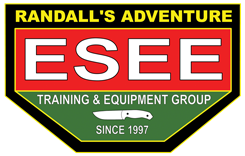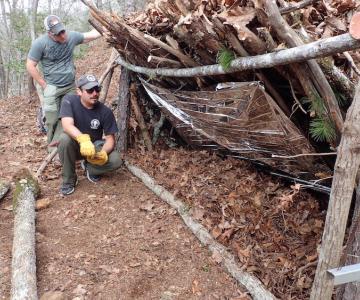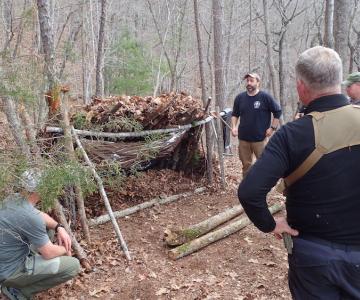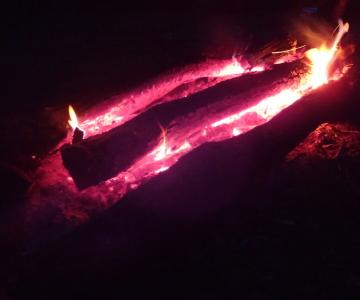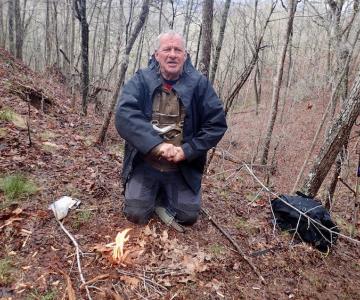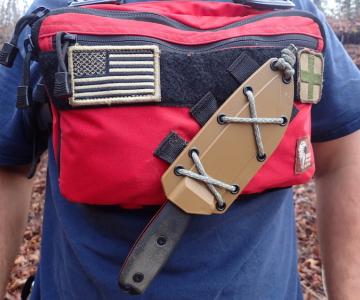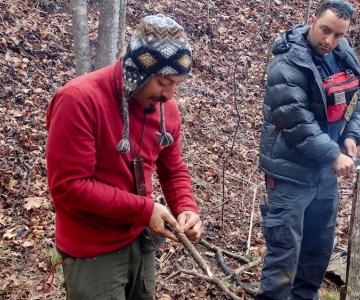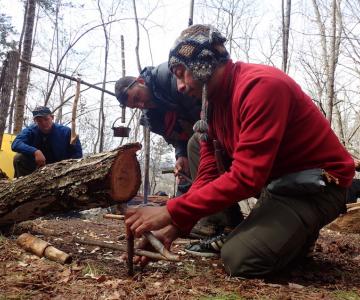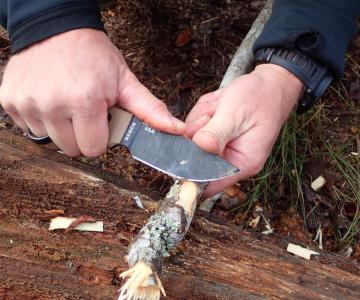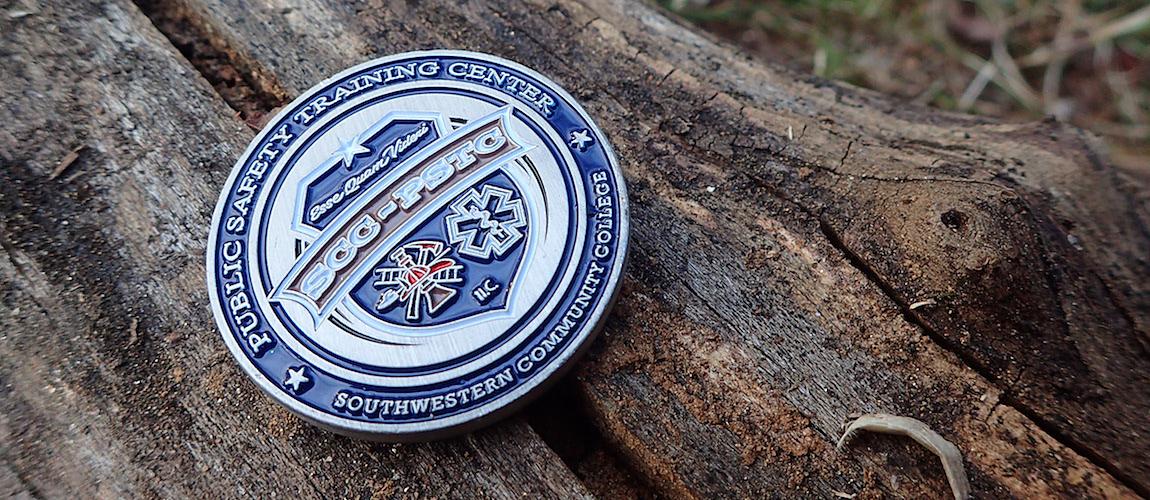
By Patrick Rollins
The ability to make a suitable shelter and a fire can mean a world of difference when suffering through a long night. This can be especially useful for search and rescue personnel who may have to shelter in place due to inclement weather. Reuben and I recently taught a two-day Survival/Bushcraft class through Southwestern College in Franklin, North Carolina.
Although SAR personnel carry some type of shelter in their packs, I wanted to teach them to how to make decent shelter out of natural materials. You can seldom predict when accidents happen such as losing your pack in the river, or off the side of the mountain. We instructed them in building a proper debris shelter, which is basically the same concept as a squirrel’s nest. A ridge pole is either lashed or propped against a tree on one end, and then more sticks are leaned up against it in an A-frame fashion. After that, a lot of debris (leaves, pine needles, etc.) are piled on top. If you have no shelter and no way of making fire, the debris shelter is the best choice because it helps trap your body heat.
If you have no shelter but can get a fire, the lean-to is what I would use. A lean-to consists of a ridgepole supported at both ends, sticks leaned against it on one side, and debris on top. Anything that would help shed water should be incorporated as well such as sheets of bark, space blankets, or plastic if it is on hand. The lean-to works best when used in conjunction with a long fire.
I strongly suggest carrying a fixed blade knife if you spend a lot of time outdoors, especially SAR members. Simply carrying it isn’t enough, you need to be able to use it safely and efficiently, so we covered safety, basic grips, snap-cutting smaller diameter saplings, and v-notching larger pieces of wood with the aid of a baton. The students soon learned that a knife is also a huge aid when it comes to processing wood for fire. Fire making was covered in depth and the students had to make a fire using only natural materials and a ferro rod. Yes, they all carry lighters also, but if you can light it with a rod, you can easily light it with a lighter or matches.
All fire building requires patience and perseverance, but most especially friction fire. Most likely you will never have to rely on making a fire with a bow drill, because you should be carrying several ways to make fire at all times. But being successful with friction fire is a huge confidence builder and it reinforces many of the principals of fire building as a whole. I am happy to say we had 100 % success rate with friction fires by the end of day one.
There was a hard, steady rain during the night, so we started off day two with more fire building. The students had to gather natural material from the surrounding woods and were allowed to use anything they had on them to start it. Many learned that even with a lighter, cotton-balls and Vaseline it is still a very difficult process when everything is wet. Preparation is the key!
The rest of the day was spent with more knife skills, bushcraft knots, and a few basic traps and snares. Not that they should ever expect to need to build traps on a SAR mission, but it is still good info to have and it gives students even more time to practice knife skills.
The North Carolina Search and Rescue Community are some of the best in the business and it was a real pleasure teaching the class.
